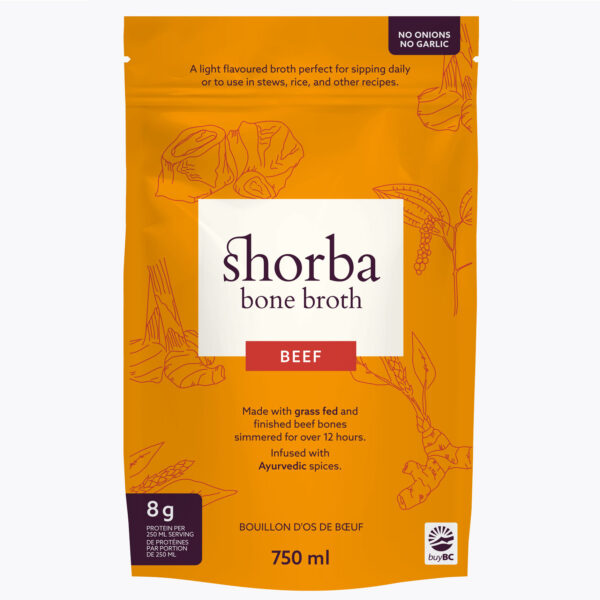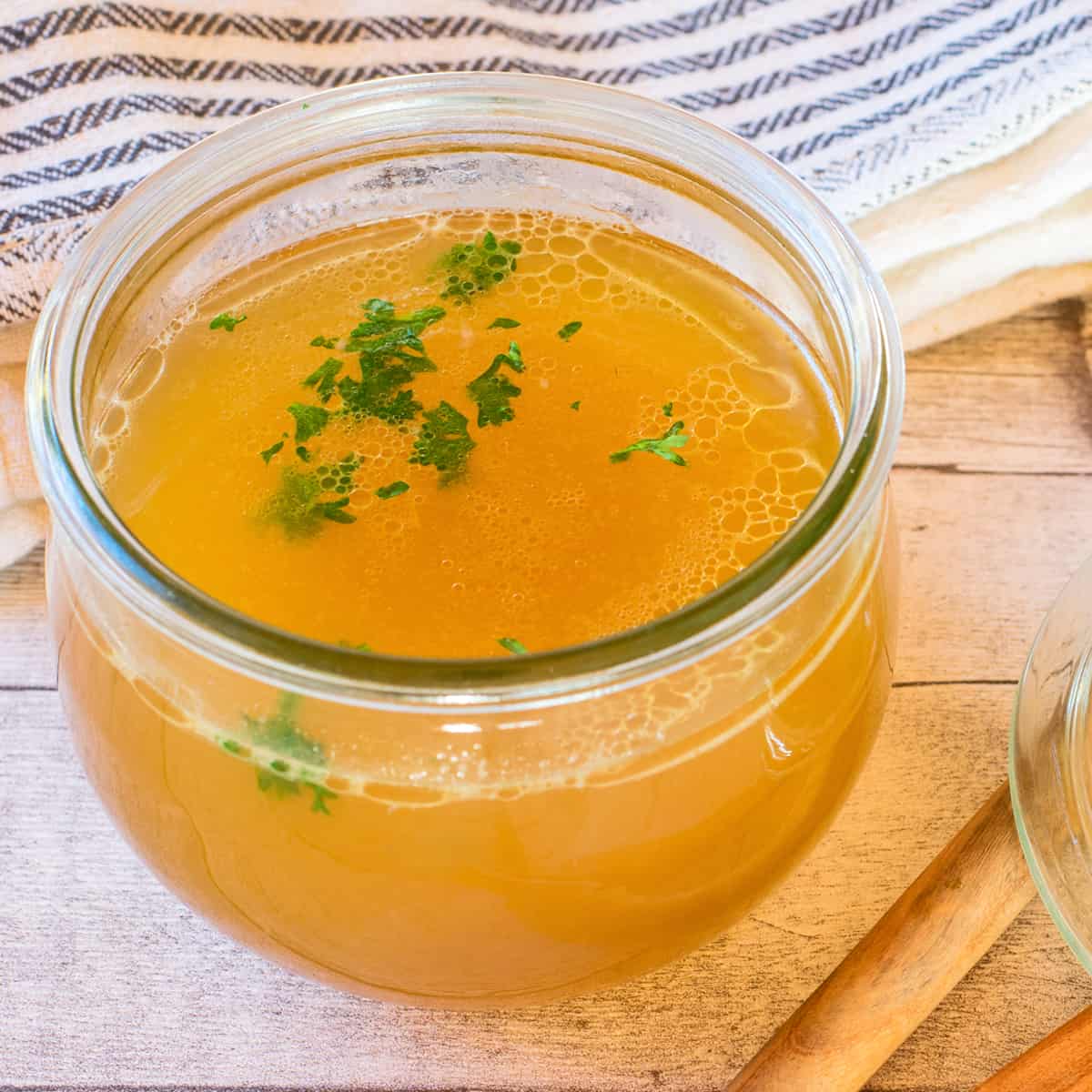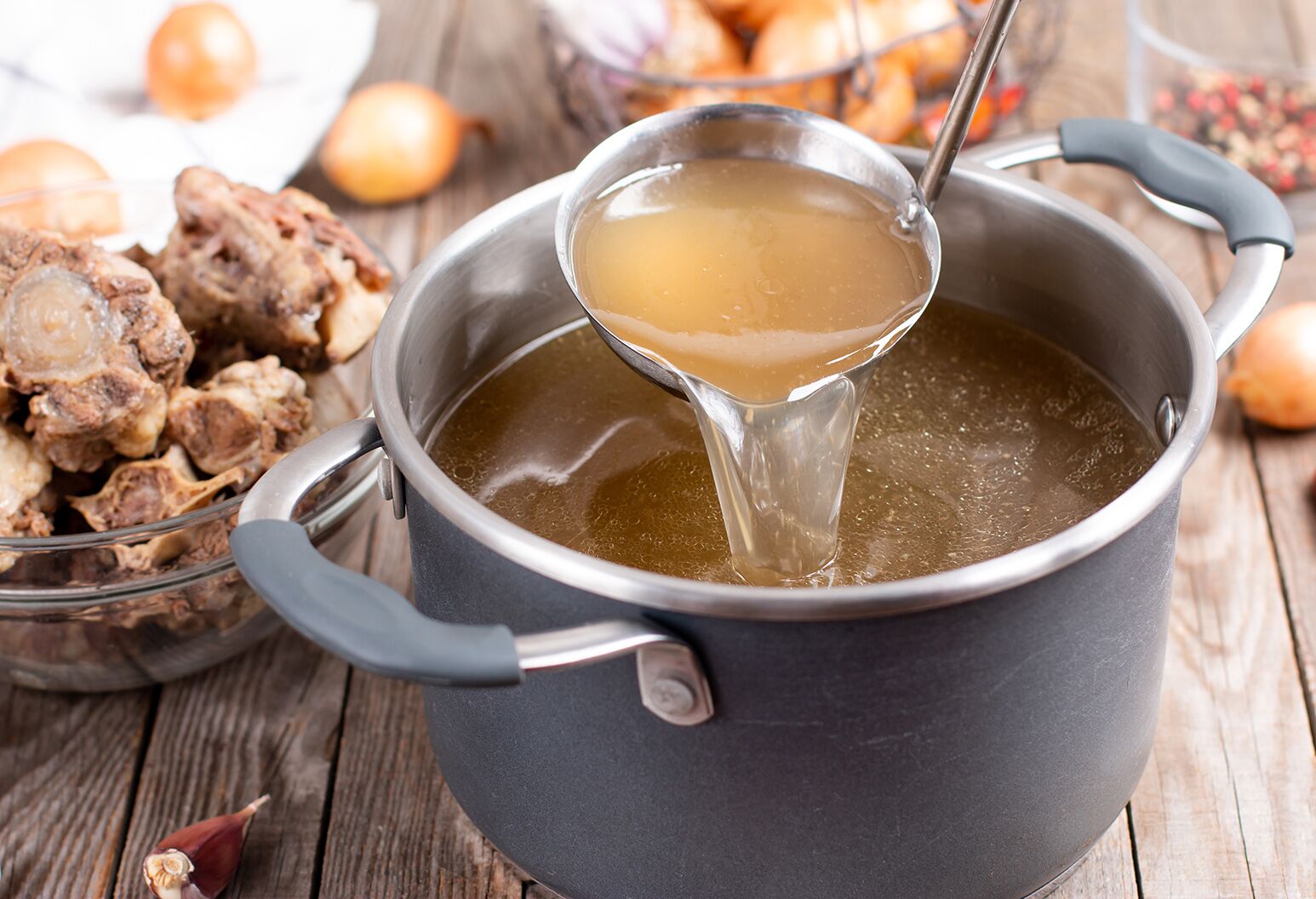Reheating Chicken Broth Without Losing Nutrients: Tips and Tricks
Reheating Chicken Broth Without Losing Nutrients: Tips and Tricks
Blog Article
The Ultimate Overview to Making and Delighting In Organic Bone Broths in your home
Bone broth has gained focus for its countless health benefits and cooking flexibility. Crafting natural bone broth at home enables people to manage the quality of ingredients, ensuring a nutritious result. Understanding the selection of bones, important flavoring components, and appropriate food preparation strategies is vital. As the procedure unfolds, one may wonder just how to elevate their broth beyond the basics and integrate it right into daily dishes for boosted taste and nourishment.
Comprehending the Health Conveniences of Bone Broth
Although bone brew has actually been a staple in different foods for centuries, its health advantages have actually obtained considerable attention in the last few years. Rich in collagen, amino acids, and minerals, bone brew is usually promoted for its prospective to support joint health, enhance digestive tract feature, and improve skin elasticity. The jelly stemmed from cooked bones might aid digestion and aid secure the digestive tract lining, potentially reducing issues like leaking gut syndrome.Furthermore, the presence of nutrients such as glucosamine and chondroitin may add to reduced swelling and pain alleviation in joints. Furthermore, bone broth is moistening and can function as a healthy base for soups and stews. Several advocates additionally claim that it enhances the body immune system, many thanks to its mineral account. On the whole, the renewal of rate of interest in bone broth is linked to its regarded capability to advertise overall well-being and assistance numerous physical features.
Selecting the Right Bones for Optimum Flavor and Nutrition
What variables should one consider when picking bones for broth preparation? The kind of bones utilized significantly impacts both flavor and nutritional worth. It is essential to pick bones that consist of a mix of marrow bones, joint bones, and meaty bones. Marrow bones offer abundant flavors and healthy fats, while joint bones add collagen, enhancing the brew's nutritional profile.Additionally, sourcing bones from grass-fed or pasture-raised pets assurances better and more nutrients, as these animals are typically healthier. The quality of the bones is also important; selecting bones from regional butchers or farmers' markets can assure suitable taste. Bone size matters too; larger bones launch more gelatin, causing a richer brew. Finally, taking into consideration the sort of pet-- hen, beef, or fish-- can affect the last preference, allowing for flexible broth alternatives tailored to specific preferences.
Crucial Components for a Delicious Bone Brew

Quality Bone Choice
The structure of a tasty bone brew hinges on the mindful selection of high-quality bones. Sourcing organic, pasture-raised or grass-fed bones is vital, as these choices are most likely to be without unsafe additives and offer exceptional nutrients. Varieties such as beef, hen, or lamb bones each give distinctive flavors and health advantages. Bone types, consisting of marrow bones, knuckle bones, and oxtails, contribute gelatin and collagen, improving the broth's structure. Selecting bones with a mix of meat and connective tissue can also include richness and depth. Additionally, selecting bones with visible marrow ensures a nutrient-dense brew, raising the overall top quality. Inevitably, investing time in top quality bone option prepares for a nourishing and delicious broth.
Fragrant Taste Enhancers
Selecting premium bones sets the stage for a abundant and healthy bone broth, but it is the addition of fragrant flavor boosters that truly elevates the recipe. Components such as onions, garlic, and carrots not just impart sweetness yet likewise contribute deepness to the brew. Fresh herbs like bay, parsley, and thyme leaves add a fragrant note, while seasonings such as black peppercorns and cloves present warmth and intricacy. In addition, incorporating a dash of apple cider vinegar can assist essence minerals from the bones, enhancing the brew. These taste enhancers create an unified mix, transforming an easy brew into a tasty structure for soups, stews, or sauces, making it a flexible part in any kind of culinary arsenal.
Step-by-Step Overview to Making Bone Brew at Home
Developing bone brew at home can be a fulfilling cooking venture that enhances both taste and nutrition in different meals. To begin, one should select high-quality bones, preferably from grass-fed or organic resources. Toasting the bones at 400 ° F for about 30 minutes can escalate the taste. Next off, transfer the baked bones to a big pot or slow-moving cooker and cover them with cool water. Adding a sprinkle of vinegar aids extract minerals from the bones.Include fragrant vegetables like onions, carrots, and celery for added deepness, together with natural herbs and flavors as preferred. Bring the mixture to a boil, after that minimize to a simmer. It is vital to let the broth simmer for a minimum of 12 hours, though longer is more effective for optimum splendor. Ultimately, strain the broth with a fine-mesh filter and store it in impermeable containers, all set to elevate dishes with its nourishing significance.

Tips for Perfecting Your Bone Broth Simmer
While simmering bone brew, keeping the ideal temperature level and timing is crucial for attaining a savory and abundant result. A gentle simmer, preferably between 190 ° F and 210 ° F, helps extract optimum nutrients and tastes without steaming, which can make the broth cloudy. It is a good idea to keep track of the pot closely, readjusting the heat as essential to keep this simmer.Timing is also important; a longer simmer, usually varying from 12 to two days, allows for deeper taste removal and collagen release. For poultry bones, a 12 to 24-hour simmer is sufficient, while beef bones take advantage of longer cooking times.Additionally, skimming any foam or pollutants that climb to the surface area throughout the first couple of hours can improve the brew's quality and preference. Ensuring the pot is covered throughout simmering aids to maintain wetness and heighten the flavors, making for a more rewarding end item.
Innovative Ways to Utilize Bone Broth in Your Cooking
Incorporating bone broth into various dishes raises both flavor and dietary worth. Chefs and home chefs alike locate that utilizing Visit This Link bone brew as a base for stews and soups improves depth and richness, changing straightforward dishes right into passionate dishes. It can additionally be used in risottos, where the brew replaces water, allowing the grains to absorb its savory essence.Additionally, bone broth functions as a superb food preparation fluid for grains like quinoa or rice, infusing them with nutrients and taste. For an included spin, it can be utilized in braising meats, causing tender, flavorful end results. Even sauces take advantage of a sprinkle of bone broth, improving their taste profile.Moreover, bone brew can be integrated into smoothies for an unanticipated health boost, providing healthy protein and nutrients without jeopardizing taste. These creative applications showcase the flexibility of bone brew in day-to-day food preparation, making it an indispensable kitchen area staple.
Saving and Maintaining Your Homemade Bone Broth
Proper storage and conservation of homemade bone brew is essential for keeping its flavor and nutritional benefits. Freezing techniques and refrigeration finest techniques play an essential function in prolonging the brew's service life. Comprehending these approaches can aid assure that the broth continues to be delicious and safe for future use.

Icing Up Strategies Discussed
Freezing techniques are important for efficiently storing and maintaining homemade bone brew, guaranteeing its abundant flavors and nutrients continue to be undamaged for future usage. To ice up bone broth, it is a good idea to allow it great completely prior to transferring it to storage containers. Glass jars, silicone molds, or durable freezer bags appropriate choices. When utilizing containers, leave space at the top for development throughout cold. Portioning the brew into smaller quantities enables for very easy thawing and decreases waste. Label containers with the date and components for very easy identification. For peak high quality, eat the icy broth within 3 to six months - Beef Broth. Thawing can be done in the refrigerator or by using a microwave, ensuring that the broth is warmed completely before intake
Refrigeration Best Practices
While several focus on cold as an approach of preservation, refrigeration also plays a necessary you could try these out duty in storing homemade bone broth successfully. When cooled down, bone broth should be moved to impermeable containers, guaranteeing very little air exposure to avoid perishing. It is recommended to cool brew within two hours of cooking to maintain its high quality. Typically, homemade bone brew can be kept in the refrigerator for as much as five days. Identifying containers with days can assist track quality. For peak flavor and safety and security, broth ought to be reheated to a moving boil before consumption. If longer storage is called for, freezing continues to be an outstanding alternative, however appropriate refrigeration techniques assure that bone brew continues to be scrumptious and healthy for short-term use.
Regularly Asked Questions
Can I Utilize Frozen Bones for Making Bone Broth?
The inquiry of utilizing icy bones for bone broth emerges often (Benefits Of Bone Broth). Specialists concur that frozen bones can be made use of successfully, but they ought to be defrosted prior to food preparation to guarantee ideal taste and nutrient removal
Exactly How Long Can I Shop Homemade Bone Brew?

Is It Safe to Reheat Bone Brew Numerous Times?
Reheating bone broth multiple times can posture safety and security worries - Beef Broth. Each reheating cycle raises the threat of microbial development. It is suggested to reheat just as soon as and keep any kind of leftovers without delay to assure safety and top quality
Can I Include Veggies to the Broth for Taste?
Adding veggies to brew boosts taste and dietary worth. Typical options consist of carrots, onions, and celery. The veggies infuse their significance into the broth, creating a richer and extra mouthwatering end product.
What's the very best Method to Defrost Frozen Bone Broth?
To thaw frozen bone broth, one can position it in the fridge overnight, use a microwave on reduced warmth, or submerge the sealed container in warm water, making certain also thawing without endangering taste or nutrients. It is essential to select bones that consist of a mix of marrow bones, joint bones, and meaningful bones. Marrow bones provide rich tastes and healthy fats, while joint bones contribute collagen, boosting the broth's dietary profile.Additionally, sourcing bones from pasture-raised or grass-fed animals warranties greater Full Article quality and even more nutrients, as these pets are usually much healthier. Bone types, consisting of marrow bones, knuckle bones, and oxtails, contribute gelatin and collagen, boosting the brew's texture. Picking high-quality bones establishes the phase for a rich and nutritious bone brew, yet it is the addition of aromatic flavor enhancers that truly elevates the recipe. Also sauces profit from a sprinkle of bone brew, enhancing their preference profile.Moreover, bone broth can be incorporated right into smoothie mixes for an unexpected health and wellness boost, providing protein and nutrients without endangering preference.
Report this page